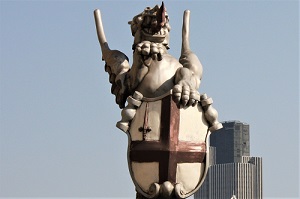 Bank Of England
Bank Of England
The Bank of England, now owned by the Government, was the first privately owned National Bank in the world and is the second oldest Central Bank, the oldest being the Bank of Sweden. Bank of England, nicknamed "Old Lady of Threadneedle Street".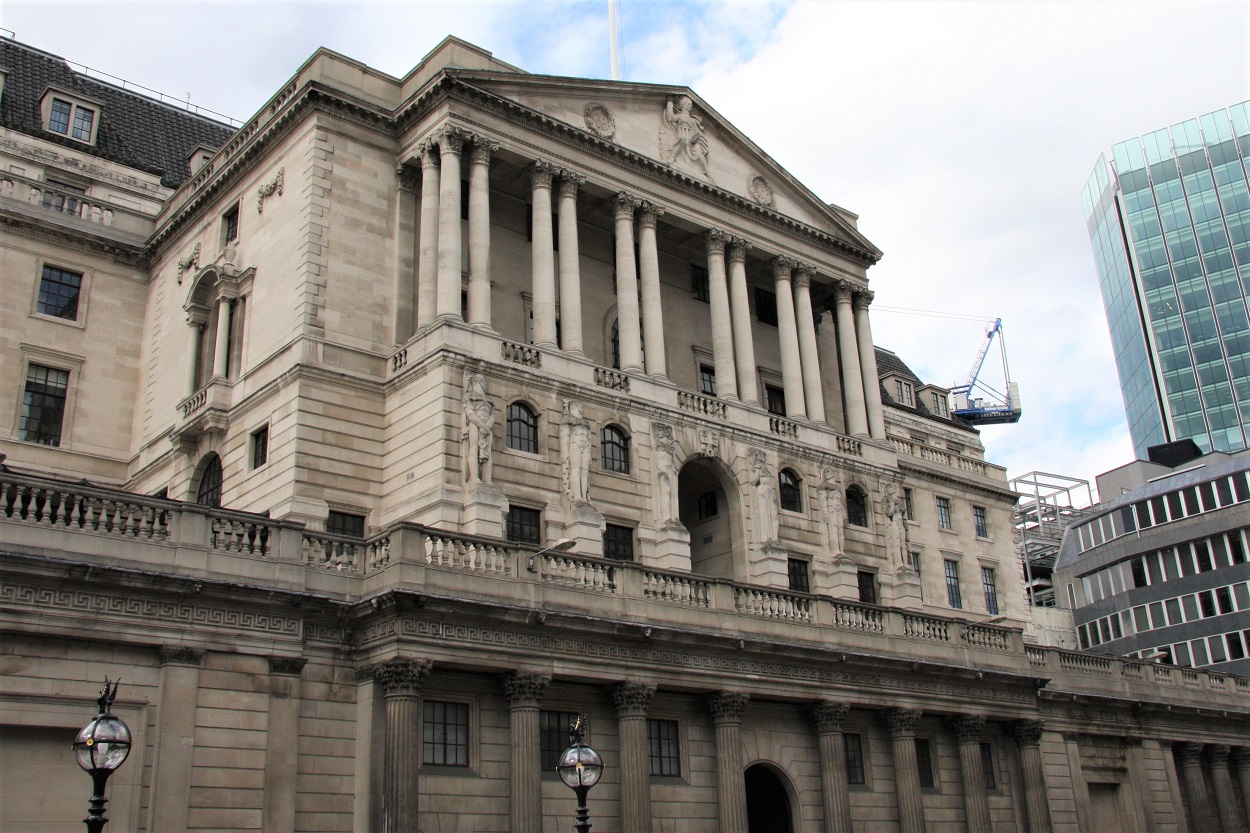
King William III
Established in 1694, the Bank of England was founded after naval defeats by the French had left the country deeply in debt. King William III needed to raise a large amount of money to re-build the British Navy and regain global power.The King turned to two city merchants who proposed to create a national bank that would raise share-capital and lend it to the Government in return for an 8% interest charge. The Government would guarantee the loan, the national debt, through the Tonnage Act, rising taxes on shipping and alcohol.
The Bank's south facade designed to give an air of importance and dignity. 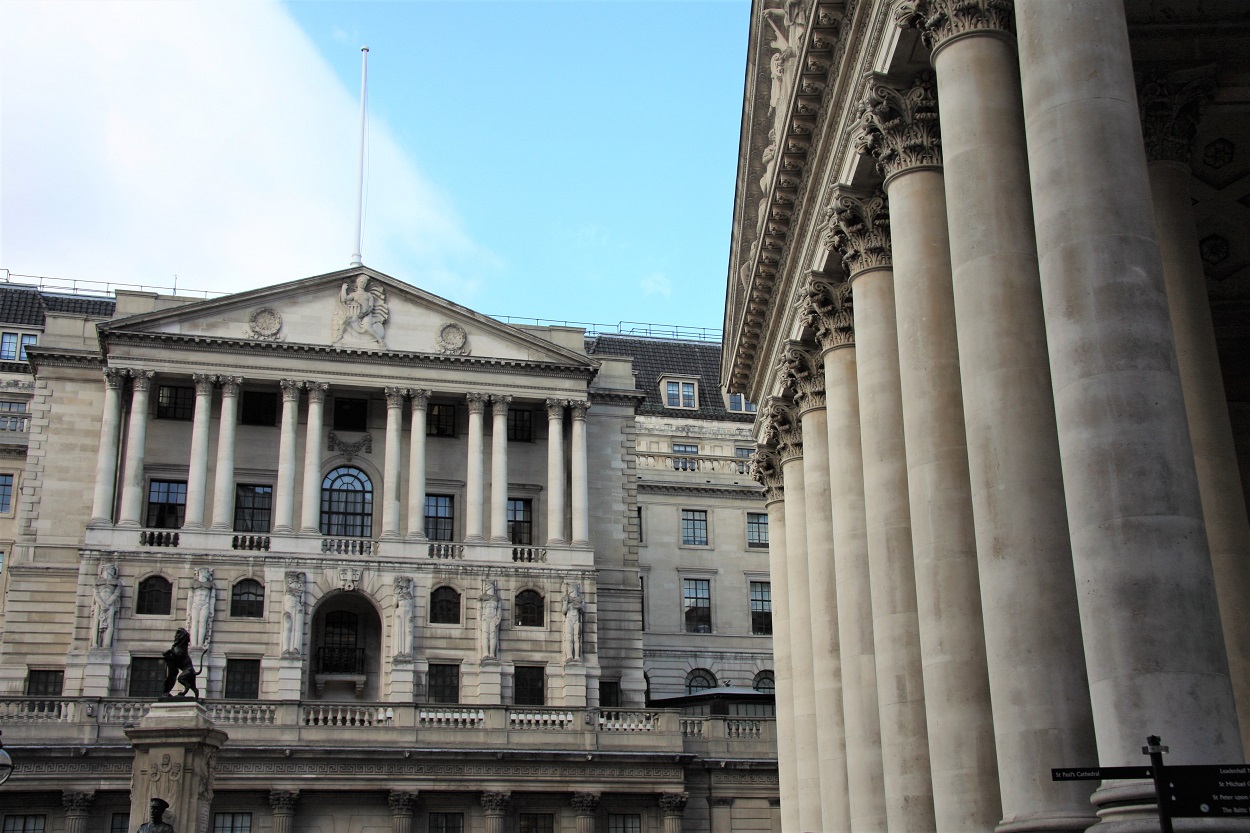
The commercial activity generated from strengthening the navy transformed the economy. Britain became prosperous and with the new power of the Royal Navy, a dominant world power.
In return for more loans to the Government, the South Sea Company secured a monopoly in trade with South America, sending their shares to 10 times their value. This speculation lead to all shares rising out of control causing the famous stock market crash of 1720, ‘South Sea Bubble’.
Entrance to the Bank of England's Museum.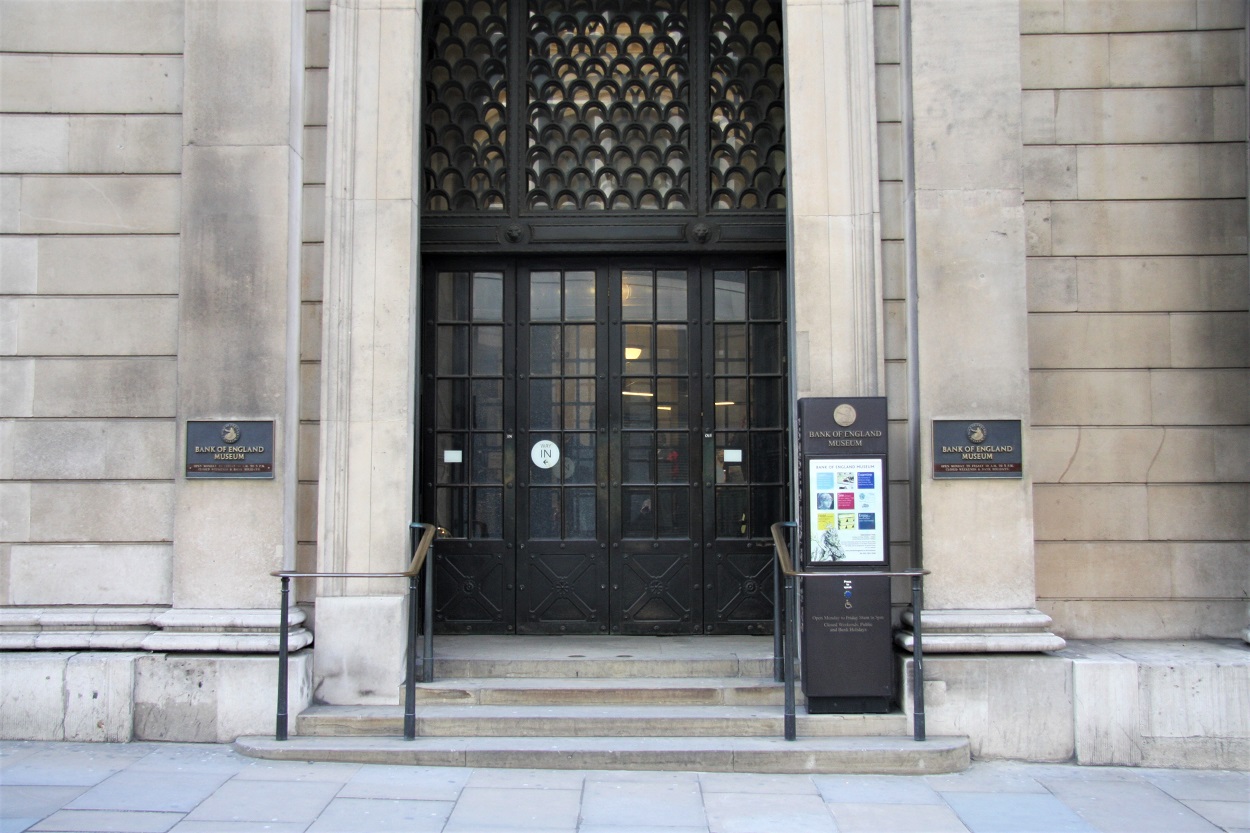
In 1781 The Bank of England became the bankers' bank and was required to keep enough gold in reserves to pay all its issued notes on demand, a promise still printed on every bank note today.
The Bank's original home was in Walbrook moving to its current location on Threadneedle Street in 1734. The present building, covering 3.5 acres, stands on an island site surrounded by huge walls. The underground vault, which contains more space than a large office block, holds gold reserves of the UK and many other countries making it one the largest stocks of gold bullion in the world.
Bank of England in the City of London's financial district.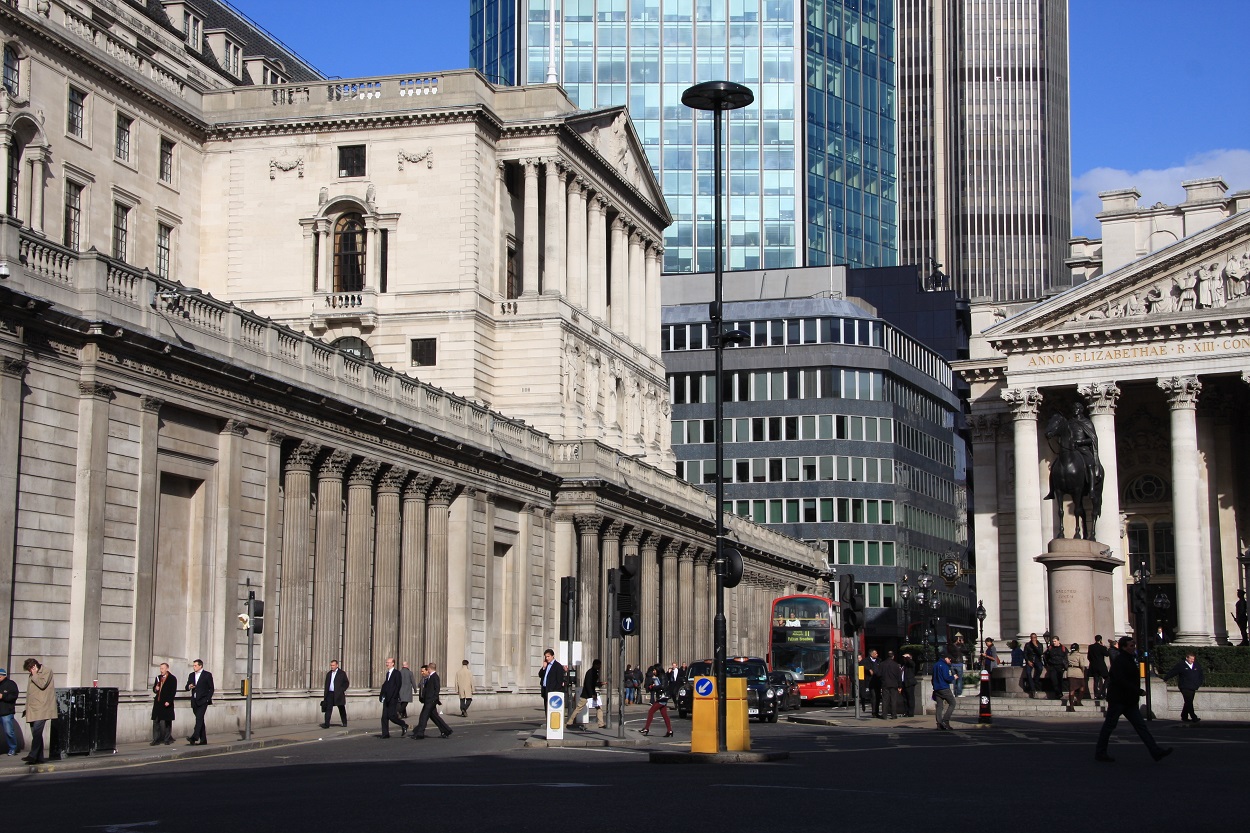
Today the Bank is responsible for setting interest rates, controlling the UK’s gold reserves and issuing bank notes in England and Wales. Standing at the center of the UK's financial system it is the model on which most modern central banks have been based.
For security reasons the main Bank of England building is not open to the gereneral public. The Bank's museum, which is free to enter, is situated on Bartholomew Lane, off Threadneedle Street.
Visitor Infomation
The Bank of England has a museum which is open to the public.Further information:
Bank of England Museum
